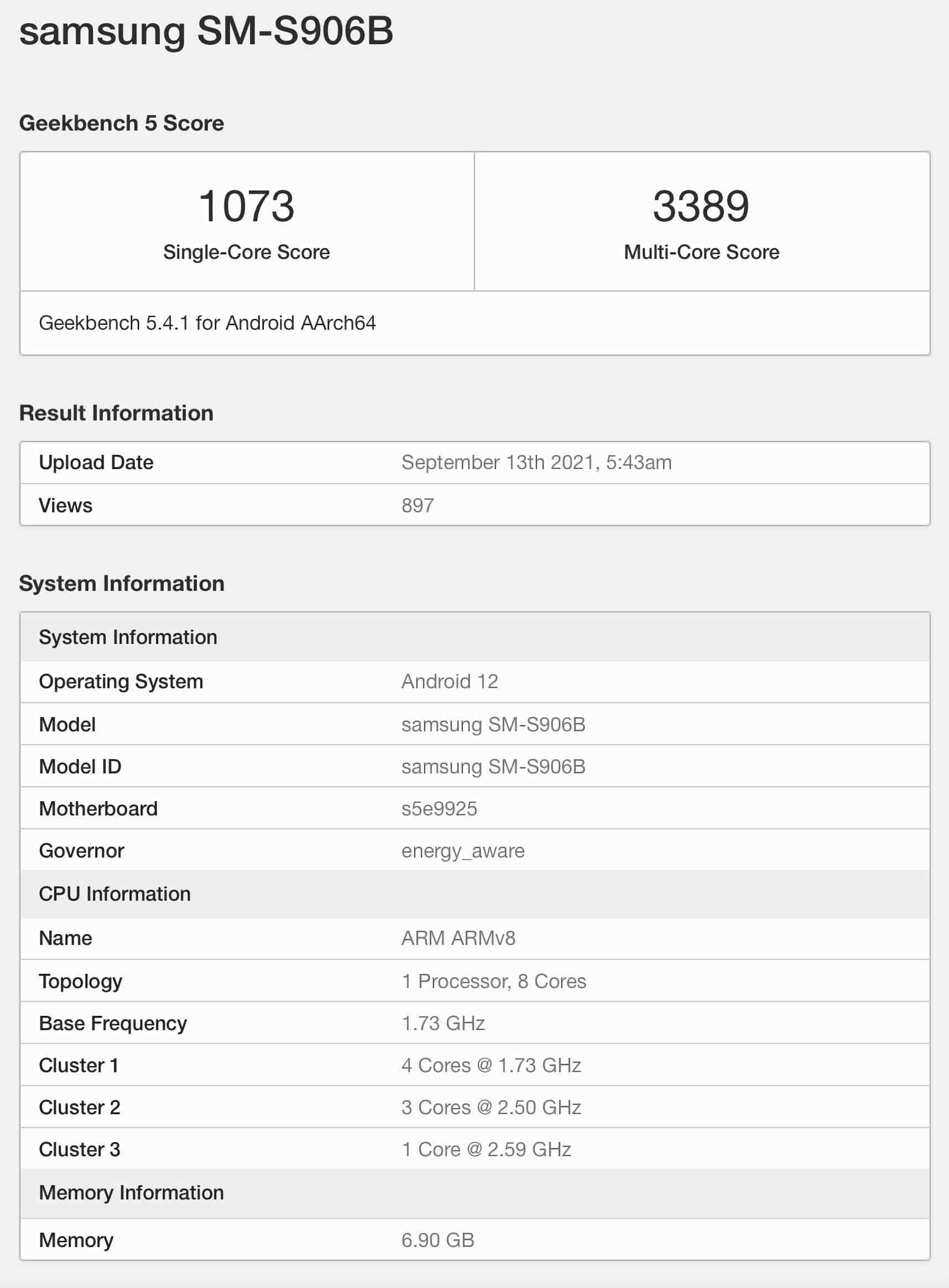Leaked benchmarks suggest Samsung's Exynos 2200 SoC won't impress with its CPU performance
In brief: Samsung and AMD are working difficult to bring the latter's RDNA 2 graphics technology to mobile, including features such as variable charge per unit shading and ray tracing. If early on benchmarks are any indication, the CPU side of the equation probably won't be every bit impressive.
The Exynos 2200 SoC is poised to exist the most heady chipset to come up out of Samsung's lab in recent years, but it won't be because of its CPU functioning. The star of the prove will near likely be AMD'due south contribution to the chipset -- the mysterious Voyager mRDNA graphics engine.
Someone on Weibo claims to have gotten their hands on a pre-production sample of the company's upcoming Galaxy S22+ telephone, which is designated every bit model SM-S906B. The AMD open up-source drivers installed on the device appear to recognize the GPU as the "Samsung Voyager EVT1."
The leakster performed a Geekbench 5 run on the device and recorded a rather unimpressive 1,073 points on the single-core exam, as well as 3,389 points in the multi-core examination. This is most on par with Qualcomm'south Snapdragon 888 Mobile Platform, which is able to record in backlog of 1,100 points in the single-cadre exam and around 3,400 points on the multi-core run.

Granted, the results could be influenced by a lack of driver optimization, as the Galaxy S22 lineup isn't expected to make an appearance until early next year. At the same time, the CPU configuration of the Exynos 2200 sample seems to be the same every bit the trio-cluster one used in the Exynos 2100, albeit with newer Arm cores running at a lower clockspeed.
There is 1 Arm Cortex-X2 "super" core clocked at 2.59 GHz, iii high-operation Cortex-A710 cores at 2.5 GHz, and 4 power-efficient Cortex-A510 cores running at ane.73 GHz. These clocks are likely not final, so Samsung volition probably squeeze more out of the chipset before it starts mass manufacturing information technology.
The mRDNA graphics engine is a different story, with early benchmarks suggesting it will trounce the current top-end Mali GPU as well as offering 50 percent more operation when compared to the GPU establish in Apple's A14 Bionic chipset. With a bit of luck, there will exist Exynos chips with AMD graphics powering future Galaxy A-series phones, too.
Source: https://www.techspot.com/news/91215-leaked-benchmarks-suggest-samsung-exynos-2200-soc-wont.html
Posted by: chenaultanneized.blogspot.com


0 Response to "Leaked benchmarks suggest Samsung's Exynos 2200 SoC won't impress with its CPU performance"
Post a Comment